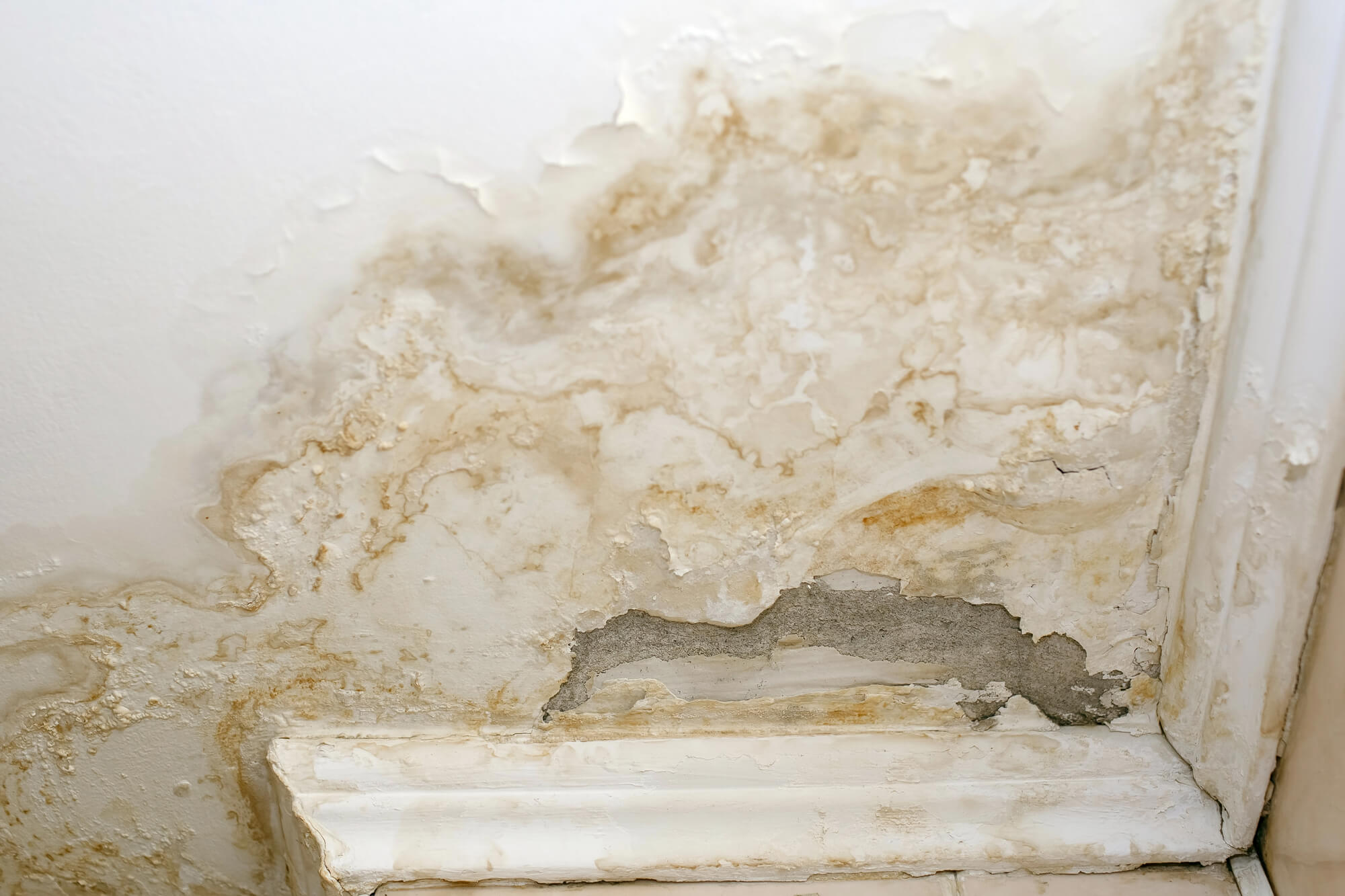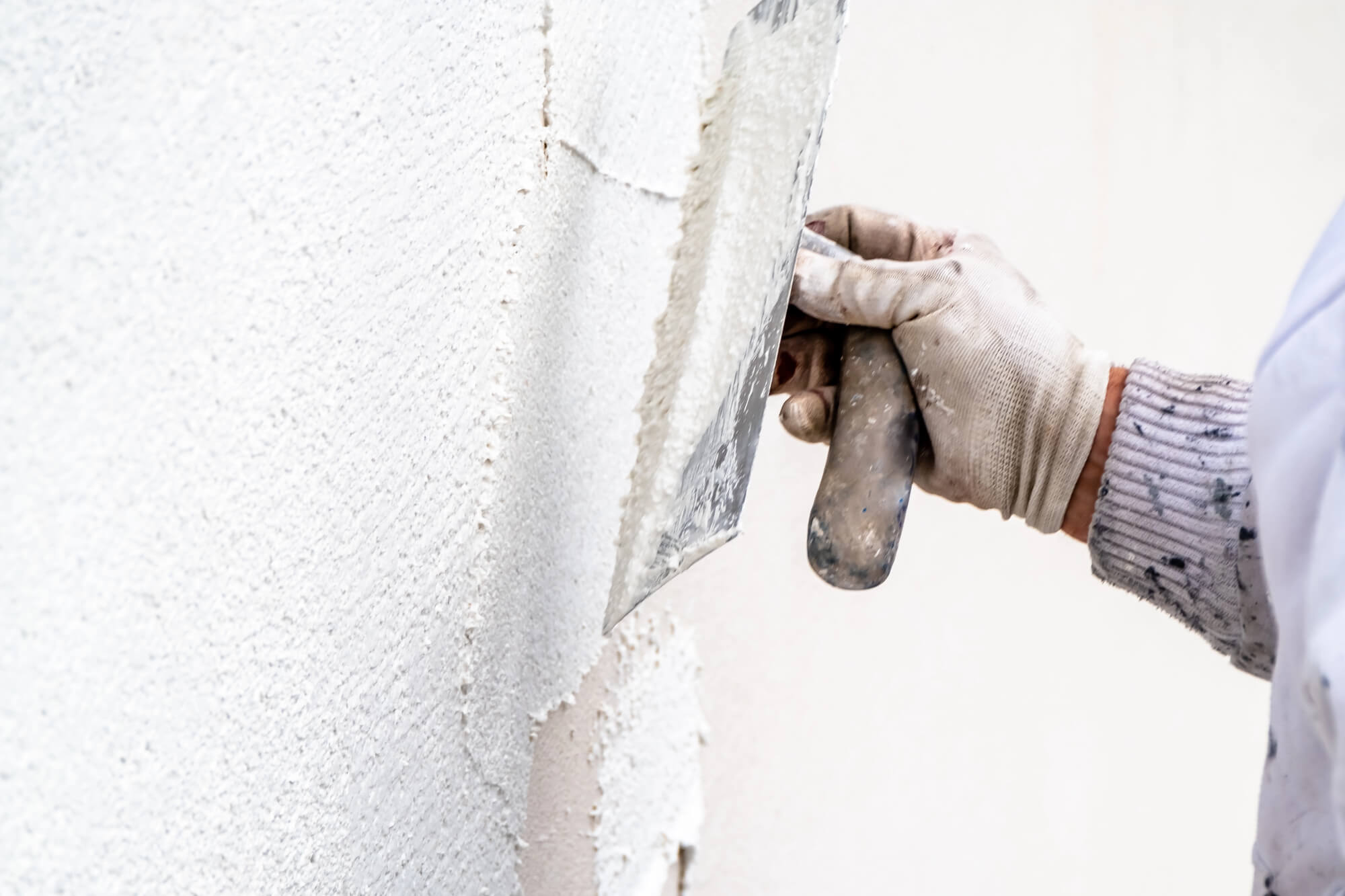Ceiling cracks can seem like a minor inconvenience or a simple cosmetic flaw, but they may be the first visible signs of deeper foundation problems lurking beneath your home. While small hairline cracks in a drywall ceiling or plaster ceiling can be harmless, larger or rapidly growing cracks often point to more serious foundation settlement or structural issues.
Cracks in ceiling corners can develop for many reasons, including foundation settling, soil movement, moisture problems, roof damage, or even past earthquake activity. In some cases, a plumbing leak or poor drainage allows water to seep into the soil, causing differential settlement that shifts the load-bearing strata beneath your home. Over time, this movement transfers stress to your walls, ceilings, floor joints, and door frames, leaving visible cracks that shouldn’t be ignored.
This guide explains the connection between ceiling cracks and foundation problems, the different types of cracks to watch for, repair techniques commonly used in San Antonio, and proactive maintenance steps to prevent future foundation damage.
Understanding Ceiling Cracks and Their Connection to Foundation Issues
How Foundation Settlement Affects the Whole House Structure
Your home’s foundation supports the entire house structure, distributing the load evenly across the soil beneath it. When foundation settlement or foundation failure occurs, it disrupts this balance, causing stress and shifting in every part of the home.
- Expansive soils in San Antonio can shrink or swell with temperature fluctuations and moisture changes, leading to uneven settling.
- Poor grading or drainage problems around the home can cause water intrusion, erode soil, and create empty pockets that can lead to serious structural damage.
- Hydrostatic pressure from water seepage builds up around foundation walls, causing movement or bowing.
These factors strain the drywall, sheetrock joints, masonry walls, and gypsum board ceilings, creating cracks that spread across walls and ceilings, often radiating out from corners or forming zigzag patterns.
The Difference Between Minor and Serious Ceiling Cracks
Not all cracks in ceiling corners or walls are indicators of major foundation issues. However, knowing the difference is crucial:
- Hairline cracks: Small, surface-level cracks often caused by aging materials, paint shrinkage, or mild temperature changes.
- Diagonal cracks or stair-step patterns: Common signs of foundation settlement, as the weight of the house shifts unevenly.
- Horizontal cracks: Often more severe, indicating stress on structural elements or weakening support beams.
- Spider web cracks: A network of small cracks that may indicate moisture damage or early signs of differential settlement.
- Vertical Cracks: These can be the most prominent, although they are ironically the least concerning of the cracks in your walls or ceilings. Vertical cracks typically come from natural settling and might not be signs of serious foundation problems. Nonetheless, keep an eye on them if they extend too long, too quickly. For example, matching or parallel vertical cracks that run from the ceiling to the wall might be a sign of a loose wall stud or another issue after an earthquake or settling.
- BONUS: Straight cracks that appear on drywall are also harmless because they often aren’t really cracks, but rather just drywall tape peeling away.
Pay close attention to direction, width, and location. Cracks near door frames, windows, or across multiple rooms are more likely linked to foundation problems.
Types of Ceiling Cracks and Wall Cracks
1. Diagonal or Stair-Step Cracks in Ceiling Corners
When you see diagonal cracks forming from the corners of walls up to the ceiling, it’s often a sign of foundation settling or soil shifting under your concrete slab. These cracks frequently coincide with:
- Sticking doors and windows caused by frame misalignment
- Gaps are forming between the ceiling and wall joints
- Cracks in the masonry siding or the chimney outside
Diagonal or zigzag patterns typically mean the load-bearing strata beneath the foundation have shifted, requiring professional foundation inspection.
2. Long Horizontal Cracks Across the Ceiling
Large horizontal cracks spanning the ceiling may indicate structural stress, such as a foundation failure or sagging load-bearing beams. These cracks can appear alongside:
- Bowing walls or uneven floor joints.
- Separation in sheetrock seams or cracks in nearby walls.
- Sagging drywall ceilings are often due to weight distribution issues caused by foundation movement.
Horizontal cracking suggests the foundation repair contractor should evaluate the structure immediately to avoid long-term damage or safety hazards.
3. Cracks with Visible Moisture or Water Stains
When ceiling cracks come with water stains, peeling paint, or darkened gypsum board, water issues may be contributing to foundation problems.
- Roof damage or water leaks allow water to travel down walls, saturating soil and causing uneven settlement.
- Moisture damage weakens sheetrock, drywall ceilings, and plaster ceilings, leading to sagging or crumbling material.
- Persistent water intrusion promotes mold growth and accelerates foundation deterioration, especially in crawl space foundations.
If you notice cracking plus water seepage, address both the leak and potential foundation settlement immediately.
4. Ceiling Cracks Accompanied by Wall or Floor Damage
True foundation problems rarely affect only one surface. If you see ceiling cracks combined with:
- Cracked masonry walls or siding,
- Misaligned door frames,
- Sloping floors, or
- Gaps between walls and floors or along baseboards,
This indicates a larger foundation issue affecting the entire house structure. Differential settlement or even sinkhole activity can destabilize multiple areas of your home simultaneously, requiring urgent evaluation from a foundation repair specialist to prevent irreversible structural damage.
5. Sudden Appearance of Large or Jagged Ceiling Cracks
Rapidly developing jagged cracks or cracks that widen over days or weeks are serious red flags.
- Often caused by soil erosion after heavy rain, landslide activity, or hydrostatic pressure on foundation walls.
- May indicate foundation failure or severe load-bearing displacement in your concrete foundation.
- It can be worsened by temperature fluctuations that expand and contract building materials.
When cracks appear suddenly or grow quickly, schedule a foundation inspection without delay to prevent potential structural failure.
Other Most Common Causes of Ceiling Cracks (Not Always Foundation-Related)
As we’ve mentioned, with vertical cracks or some hairline cracks, not all fissures should cause alarm. At least, not with regard to your property’s foundation, as they can be signs of other issues in your home.
- Natural Aging of the House: Over decades, homes experience minor settling that creates small hairline cracks in ceilings and walls. These are usually cosmetic unless they spread or widen significantly.
- Temperature and Humidity Fluctuations: Expansion and contraction of building materials from heat or humidity can cause small surface drywall cracks particularly in the joints or sheetrock seams.
- Roof or Plumbing Issues: Roof leaks, attic water damage, or hidden plumbing leaks can lead to ceiling cracks unrelated to foundation movement. However, water intrusion can eventually weaken the foundation, making an inspection essential.
How to Tell If Ceiling Cracks Are Linked to Foundation Problems
To determine whether cracks in your ceiling are cosmetic or signs of foundation settlement, look for patterns:
- Cracks in multiple rooms, often near door frames or windows.
- Horizontal or diagonal cracking extends across both walls and ceilings.
- Uneven or sloping floors, tilting cabinets or pianos, or sticking doors.
- Moisture problems or visible gaps along joints and siding.
If two or more symptoms appear together, call a foundation repair contractor for a professional inspection.
Common Foundation Repair Techniques in San Antonio, Texas
In San Antonio, Texas, foundation problems are quite prevalent due to the region’s unique soil composition and climate conditions, so homeowners will be well served by learning the common repair techniques to choose the best solution for their specific foundation issues.
- Concrete Pressed or Slab Piers: These are driven deep into load-bearing soil layers, effectively lifting and stabilizing foundations affected by the expansive soils that are common in Texas.
- Slab Lifting Foam Injection: Using advanced polyurethane foam to lift and level a concrete slab foundation, similar to mudjacking. The foam expands and lifts the slab, and its lightweight, but strong, properties avoid adding extra weight to the soil below.
- Steel Push or Helical Piers: Both of these underpinning products are used for severe foundation failures. Steel piers (or push piers) penetrate deep into bedrock, providing stronger and longer-lasting support for the home. After the steel piers are in place, hydraulic lifting systems raise the building. Meanwhile, helical piers or screw piles are ideal for areas with soft subsoil conditions. These screw-like supports are effective for stabilizing lighter structures while causing minimal disturbance to the surrounding soil.
- Slabjacking (Mudjacking): This technique involves pumping a grout mixture beneath sunken concrete slabs to lift them back to level, effectively addressing cases of differential settlement.
- Drainage and Moisture Management Systems: These systems include French drains, soil regrading, and gutter adjustments, all aimed at preventing water pooling and reducing hydrostatic pressure, which can lead to foundation settling.
Preventive Maintenance to Avoid Ceiling Cracks and Foundation Problems
- Maintain proper drainage around your home to keep water away from the foundation.
- Regularly clean gutters and downspouts to prevent water issues and soil erosion.
- Repair roof damage, plumbing leaks, and water seepage promptly.
- Monitor soil moisture, avoiding extremes of dryness or oversaturation.
- Schedule routine foundation inspections, especially after floods, droughts, or earthquakes.
- Keep large trees away from the home’s perimeter to prevent root intrusion and soil displacement.
- Watch for new cracks, bowing walls, and door frame misalignments, addressing them early before foundation failure occurs.
The Role of Professional Inspection and Foundation Repair
A certified foundation repair contractor uses advanced tools to evaluate:
- Soil conditions, signs of differential settlement, and load distribution.
- Cracks in drywall, masonry, siding, and ceilings.
- Moisture problems that weaken foundations over time.
Early foundation inspection and proactive maintenance prevent costly repairs, keep your home safe, and ensure long-term structural stability.
Ceiling, Wall, Floors: Don’t Let Any Crack Sneak Up on You
While not all ceiling cracks are serious, many are early warning signs of foundation problems that demand immediate attention. Ignoring these signs risks long-term foundation failure, water intrusion, and expensive repairs.
If you see diagonal, horizontal, or spiderweb cracks, especially alongside floor gaps, sticking doors, or water stains, schedule a professional foundation inspection today.
Above All Foundation Repair in San Antonio specializes in diagnosing and fixing foundation issues, using proven techniques to stabilize your home and prevent further damage.
Contact our team now for expert assessment and reliable solutions to keep your house safe and stable.



